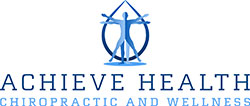Learn About Whiplash
Whiplash is a nonmedical term used to describe neck pain following an injury to the soft tissues of your neck (specifically ligaments, tendons, and muscles). It is caused by an abnormal motion or force applied to your neck that causes movement beyond the neck’s normal range of motion.
- Whiplash happens in motor vehicle accidents, sporting activities, accidental falls, and assault.
- The term whiplash was first used in 1928, and despite its replacement by synonyms (such as acceleration flexion-extension neck injury and soft tissue cervical hyperextension injury), it continues to be used to describe this common soft tissue neck injury. Your doctor may use the more specific terms of cervical sprain, cervical strain, or hyperextension injury.
Whiplash Causes
The most frequent cause of whiplash is a car accident. The speed of the cars involved in the accident or the amount of physical damage to the car may not relate to the intensity of neck injury; speeds as low as 15 miles per hour can produce enough energy to cause whiplash in occupants, whether or not they wear seat belts.
- Other common causes of whiplash include contact sport injuries and blows to the head from a falling object or being assaulted.
- Repetitive stress injuries or chronic strain involving the neck (such as using your neck to hold the phone) are common, non-acute causes.
- Child abuse, particularly the shaking of a child, can also result in this injury as well as in more serious injuries to the child’s brain or spinal cord.
When to Seek Medical Care
The best time to call your doctor is immediately after the injury. If the patient cannot determine whether an emergency department visit is needed for the symptoms, then contact the doctor and ask for advice. If the doctor is unavailable at the time of the injury, then call 911 for transport to the emergency department. The risks associated with a possible neck injury are far too great to attempt to diagnose and self-treat. See a doctor and have the patient’s neck braced to keep the head from moving during transport.
Depending upon the severity of a car accident, emergency medical personnel may take the patient to an emergency department immediately. In this case, a cervical collar will be placed around the patient’s neck, and the body will be strapped to a long, firm board to prevent any movements until a doctor sees the patient.
With less severe auto accidents, sports injuries, or other accidental injuries, emergency medical services may or may not be involved in the patient’s pre-hospital care. You should call 911 emergency medical services if the patient develops any of the following symptoms shortly after the injury:
- Neck pain
- Pain in either or both arms
- Shoulder pain
- Headache
- Dizziness
- Weakness, tingling, or loss of function in the arms or legs
Whiplash Symptoms
These signs and symptoms may occur immediately or minutes to hours after the initial injury; the sooner after the injury that symptoms develop the greater the chance of serious damage.
- Neck pain
- Neck swelling
- Tenderness along the back of your neck
- Muscle spasms (in the side or back of your neck)
- Difficulty moving your neck around
- Headache
- Pain shooting from your neck into either shoulder or arm
Depending on the nature and severity of any continuing symptoms, the doctor may refer the patient to another Doctor of Chiropractic who specializes in the rehabilitation of these types of injuries. The doctor may also encourage physical therapy and monitor the patient for other injuries that may have been aggravated. Until you can see a doctor you might want to ice down the trouble areas using a wrapped cloth and null the pain with an over the counter pain killer. Many people take rest for granted but the truth is getting proper rest can help your mental mind state become clearer which in turn will help you cope with your ailments much better leading to a faster recovery period.


